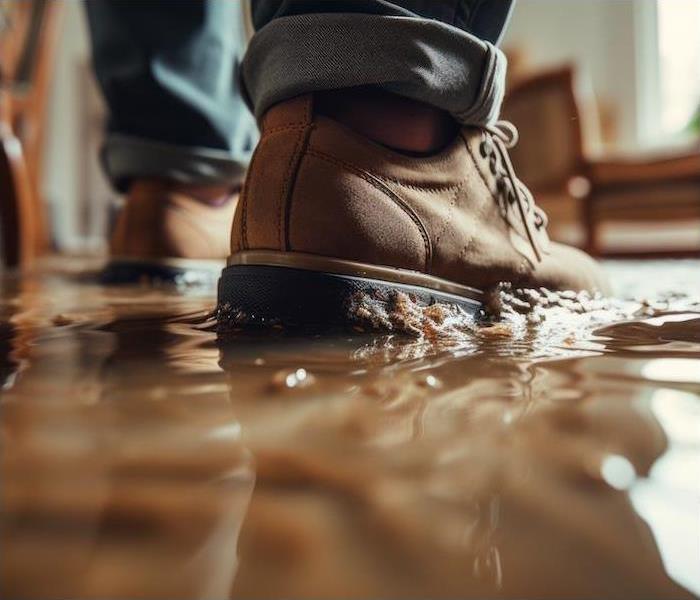The Basics of Flood Damage Prevention | SERVPRO of Hayward
4/1/2024 (Permalink)
 SERVPRO of Hayward is ready to help in a moments notice after spring showers leak in to your home or business.
SERVPRO of Hayward is ready to help in a moments notice after spring showers leak in to your home or business.
Taking life back to the basics is sometimes necessary, especially if you want or need to get a task done right. Whether you are helping a child with math homework, attempting to figure out a solution to a faulty appliance or protecting your home from damage, starting with the basic tasks can help immensely.
The same holds true when it comes to preparing for severe weather and flooding situations in your home. While we all know that we can’t completely control Mother Nature, we can all take simple measures to protect our homes from damage when flooding emergencies are present.
Floods are a really common reason for home damage, which makes preparing for them even more important no matter the season.
Flooding can happen in many different ways, and the weather isn’t always a factor when it comes to flowing water. Manmade disasters like busted pipes or faulty appliances can also cause serious damage to your home. Thankfully, these situations are often a bit easier to recover from because they can be tracked down and corrected faster. Floods from overflowing waterways, heavy rains or roof leaks can often lead to more destruction, especially if they happen during a severe weather event.
We are at a moderate flood risk in the Hayward area due to our tendency to experience heavy rain and our close proximity to Hayward Lake and other waterways. Understanding your property’s personal flood risk can help you create your own flood prevention plan.
Even if your property is not in a designated flood zone, it is still important that you understand how your property reacts when it rains. If you live in a low-lying area or have a yard that slopes toward your home, adding extra drainage or a rain garden can help your basement stay dry. Simple things like adding extra length to your downspouts can also go a long way toward protecting your home.
Our community is blessed with heavy tree coverage, but that also means that your gutters are vulnerable to becoming clogged or blocked with debris. Investing in gutter covers can help keep the rainwater moving through your gutter system the way it needs to. Get in the habit of getting on your roof after a storm to check your gutters and shingles for damage.
While knowing about our area is crucial when it comes to preparation, you should also take more permanent preparation steps to avoid damage as much as possible.
If you struggle with your yard flooding when it rains, consider investing in professional yard grading to help encourage the rainwater to flow down and away from your foundation. You can also add mulch or other absorbing natural materials around your property to help you stay dry.
Inside your home, you should be checking on your windows and doors seasonally to make sure they are sealed tight against the elements. Update caulk lines as needed, and consider fully replacing any troublesome windows. If you have a sump pump, have it inspected annually so you can rest assured that it will start working when you need it most.
Take things back to the basics when it comes to preparing your home for floods and keep in mind that we are always here to help if you wind up suffering from any sort of water damage.
Do you have water damage in your home? Contact us at SERVPRO® for fast recovery.





 24/7 Emergency Service
24/7 Emergency Service